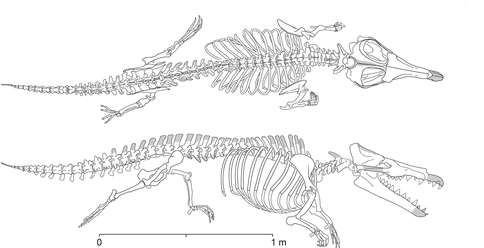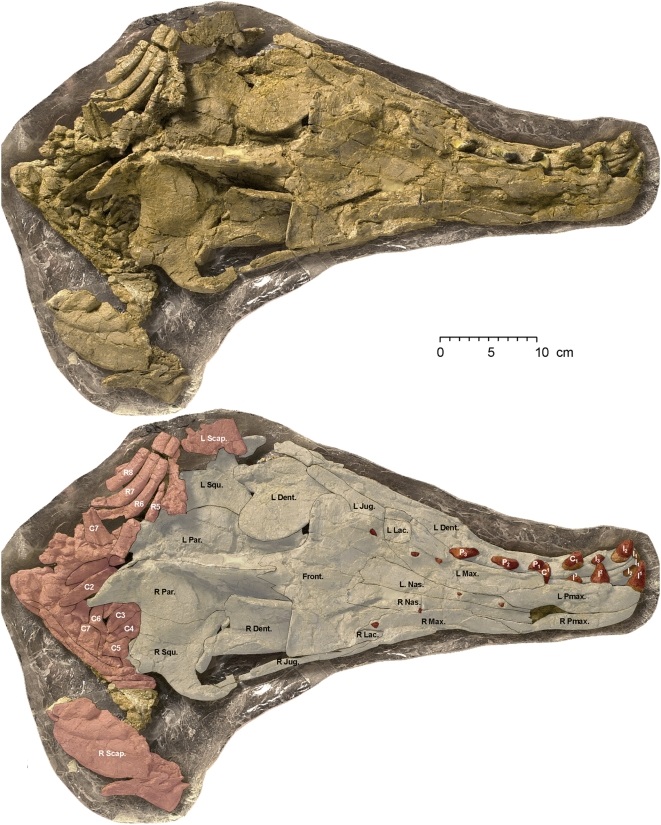Form and Function
The discovery of one of the modern whale’s ancestor, Maiacetus inuus, helped confirm the idea that the order Cetacea once had amphibious creatures. These creatures lived both on land and at sea telling us more about the organism’s structure. Maiacetus inuus had to be built to handle both terrestrial and aquatic conditions. The skeletons showed that the organisms were capable of bearing their weight on land because they had relatively short limbs and their pelvic girdle provided a direct connection to their vertebral column (Gingerich et al. 2009). However the organism did not have a fluked tail like all modern cetaceans (Gingerich et al. 2009; Perkins 2009) leading analysts to suggest Maiacetus inuus dog-paddled their way through water with their webbed digits (Perkins 2009).
Figure 1. The changes as the modern whale evolved from a land creature to sea creature. Of the twelve physiological changes listed above only two of them remain the same during the transition (Gingerich 2011).
Even though Maiacetus inuus
were built to accommodate both terrestrial and aquatic conditions,
they could not
travel long distances. Their short, stocky limbs limited their
terrestrial locomotion and inhibited substantial aquatic travel
(Gingerich et al. 2009). Due to their lack of a fluked
tail, which all modern cetaceans have, they had to navigate
through water primarily using only their powerful feet. The
Maiacetus inuus were believed to have eaten at sea and came
ashore to rest, mate, and give birth (Gingerich et al.
2009).

Paleontologists were fortunate to have discovered a female,
male, and baby fetus to give them an idea on how size and structure
differed between gender and age. By having all three skeletons to
analyze it gave them a better idea of how body structure may have helped
with different functions. When comparing the length of the male and
female Maiacetus inuus from the tip of their nose to the
tip of their tail it was found that the adult male was 12 percent
larger (Gingerich et al. 2009). Then analysts
calculated the length and weight for a medium-sized Maiacetus
inuus skeleton figuring it to be 2.6 meters in length and weigh
an estimated 280-390kg (Gingerich et al. 2009).
Size was not the only difference between the male and female, the male skeleton showed well developed protocones on the upper molars while the female skeleton did not expose any. The protocones on the male’s upper molars were used to slice and tear apart their prey leading to the conclusion that male Maiacetus inuus were primarily responsible for hunting prey (Gingerich et al. 2009). The male skeleton also had canine teeth that were 20 percent larger than the females (Perkins 2009). Both of the skulls had long jaws, pointed incisors and cuspate cheek indicating that they were specialized piscivores, (Gingerich et al. 2009) meaning they were primarily fish eaters.
To continue learning about the Maiacetus inuus continue to the next page Life History and Reproduction.

